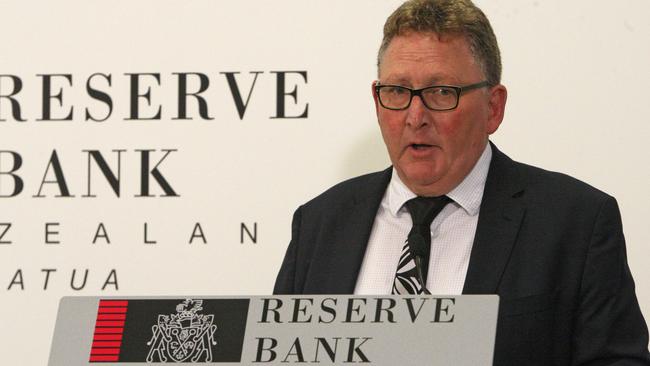Kiwi cut raises the prospect of negative interest rates
The prospect of negative interest rates has been raised after the Reserve Bank of NZ’s decision.

The prospect of negative official interest rates hung over the economy last night following a shock decision by the Reserve Bank of New Zealand to slash its rate to 1 per cent, paving the way for cuts on this side of the Tasman.
In what was the first 0.5-percentage-point “double whammy” rate cut since the Christchurch earthquake in 2011, RBNZ governor Adrian Orr said it was “easily within realms of possibility that we might have to use negative interest rates”, sending shockwaves through local currency markets.
The Australian dollar was dragged down below US67c for the first time in a decade.
The decision — expected by none of Bloomberg’s 21 surveyed economists — saw the probability of two further interest rate cuts in Australia by the end of the year head towards a certainty.
“We would be negligent not to be doing work (on) how we do negative interest rates, how we might do asset purchases and forward guidance, how we might do other forms of intervention,” Mr Orr said in Wellington yesterday, pointing to examples in Europe and Japan.
The announcement comes ahead of RBA governor Philip Lowe’s twice-yearly appearance before the house economics committee tomorrow, where he will be questioned about his own rationale for back-to-back rate cuts in June and last month to bolster inflation and employment, and the Reserve Bank’s attitude towards quantitative easing.
The policy shift also came as markets settled after a rocky few days following US President Donald Trump’s designation of China as a “currency manipulator” after Beijing depreciated its currency on Monday as payback for another wave of US tariffs due to begin next month.
The benchmark S&P/ASX200 index closed up 0.6 per cent at 6519, while the Australian dollar was trading just above US67c last night, after dropping to US66.8c.
“The full-blooded cut was intended to demonstrate ongoing commitment to the RBNZ’s targets,” JPMorgan economist Ben Jarman said. Suggesting it was a “pre-emptive move in the presence of headwinds” from a weaker global economy, he added: “The domestic data has been reasonable, including a new decade low on the unemployment rate.”
Mr Orr rejected criticism that the move could spur excess borrowing. “Inflation and employment are our targets and our interest rate is our instrument, and it makes complete sense to be using our instrument to make sure we hit our inflation and employment targets,” he said.
The RBNZ also downgraded its 2019 forecasts for inflation and growth to 1.4 and 2.4 per cent.
Reflecting a sharp decline in expectations for inflation and interest rates globally this year that has heightened the risk of recession, the US Federal Reserve trimmed its official rate last month to a range of 2-2.25 per cent.
“The RBNZ has led the global rates cycle as the first G10 country back in May to cut and today delivering a larger-than-expected one,” HSBC’s Paul Bloxham said.
In Sweden and Japan, central banks pay -0.25 per cent and -0.1 per cent respectively on bank reserves.
The Australian Treasury borrowed $800 million yesterday for 12 years at an interest rate of 1.05 per cent a year, well below the 1.6 per cent rate of inflation.
Observing “gamesmanship”, Mr Jarman speculated that the RBNZ cut might have eased pressure on banks having to deal with separate increases in capital.
“Senior officials have given no quarter in their ambition to sharply raise bank capital requirements, which will likely flow through to mortgage rates,” he said.




To join the conversation, please log in. Don't have an account? Register
Join the conversation, you are commenting as Logout